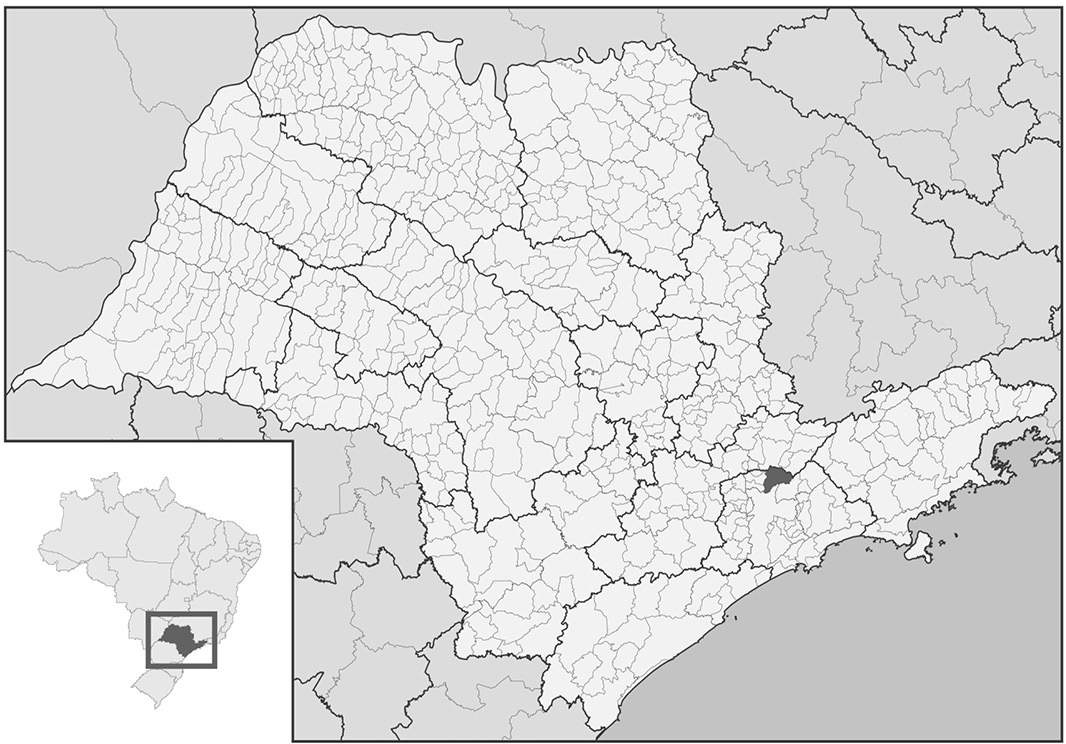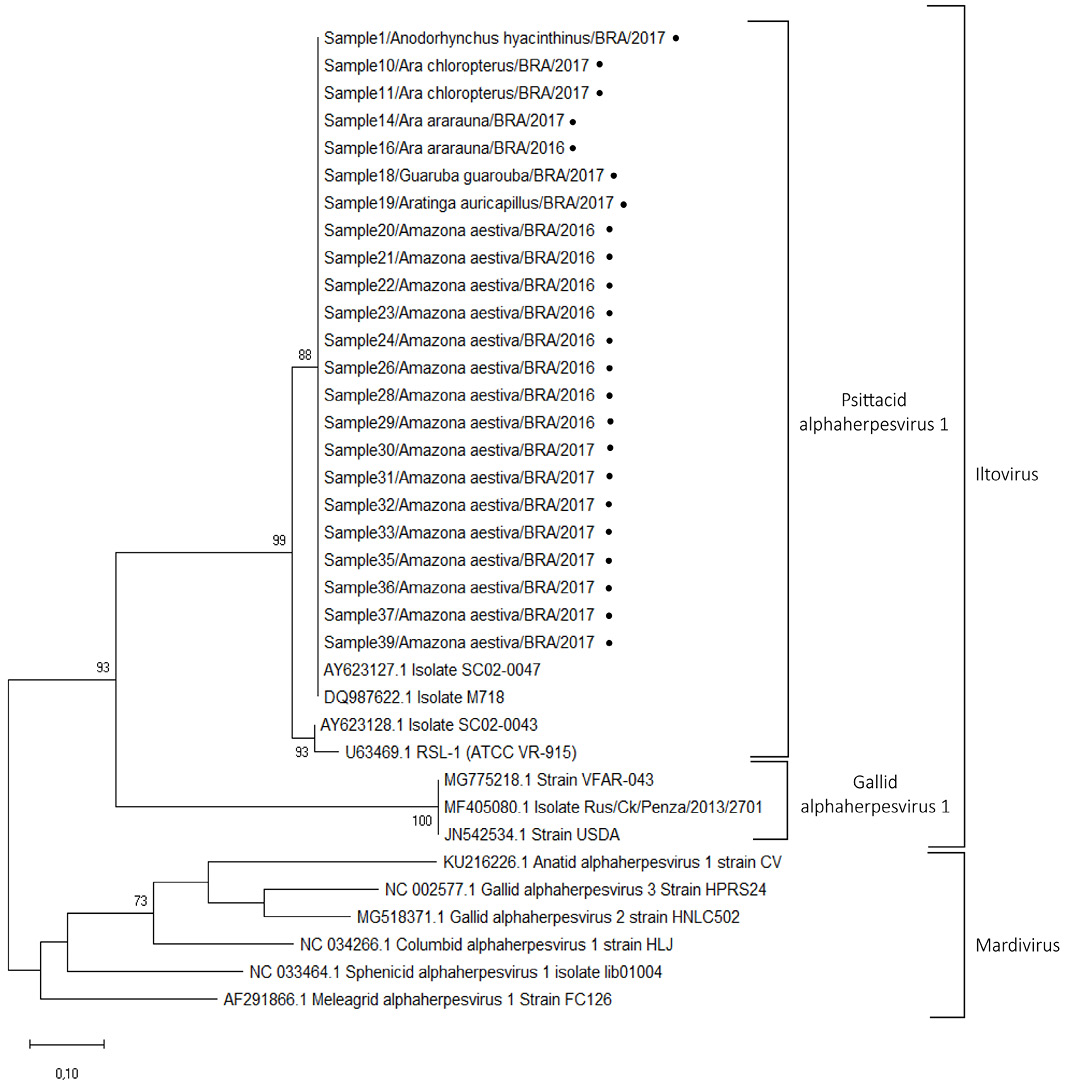Pacheco’s Disease Outbreak with High Mortality in Brazilian Captive Psittacine Birds
Pacheco’s Disease Outbreak with High Mortality in Brazilian Captive Psittacine Birds
Carla Meneguin Barbosa1*, Fabio Gregori2, Cairo Monteiro1, Thais Helena Martins Gamon1, Luciano Matsumiya Thomazelli1, Tânia de Freitas Raso2 and Edison Luiz Durigon1
Map depicting the localization of Mairiporã City São Paulo State, Brazil. (© 2006 Raphael Lorenzeto de Abreu under Creative Commons BY 2.5).
Nucleotide neighbor-joining distance tree (maximum composite likelihood substitution model) for the partial DNA polymerase gene (UL30) showing the avian herpesvirus species belonging to Iltovirus genus and representatives from Mardivirus genus. Strains detected in the present study are followed by black dots. The numbers at each node are bootstrap values greater than 70% from 500 replicates. The tree is drawn to scale, with branch lengths in the same units as those of the evolutionary distances used to infer the phylogenetic tree.








